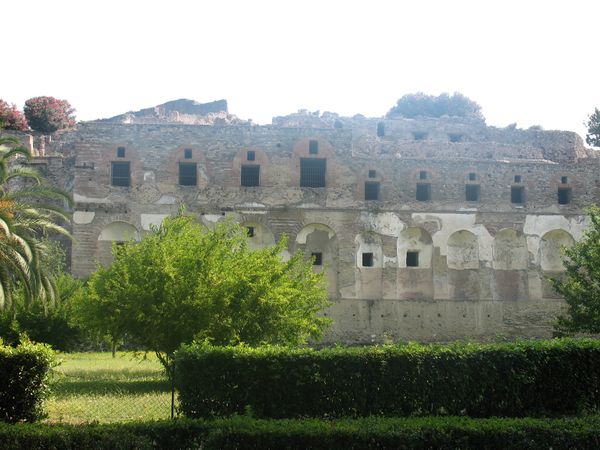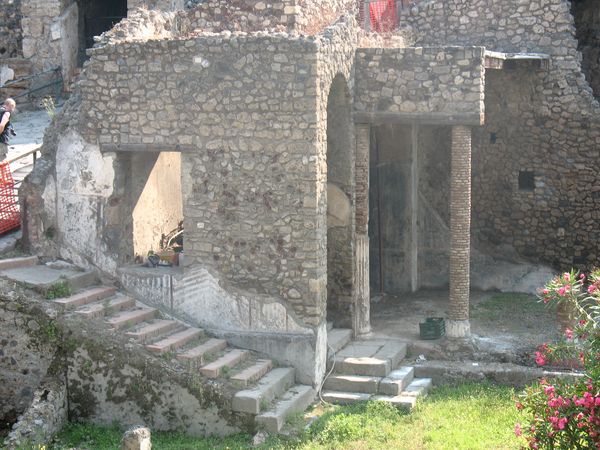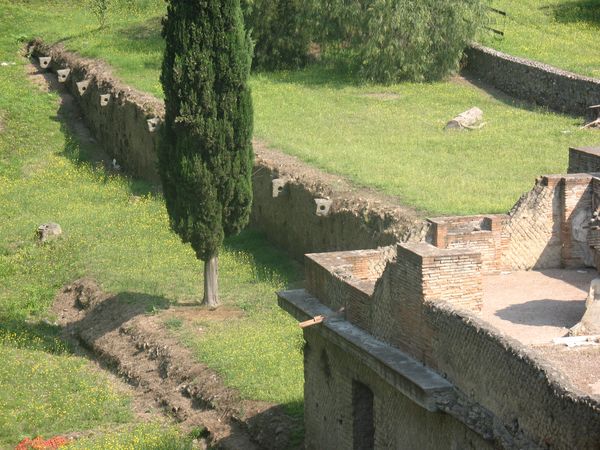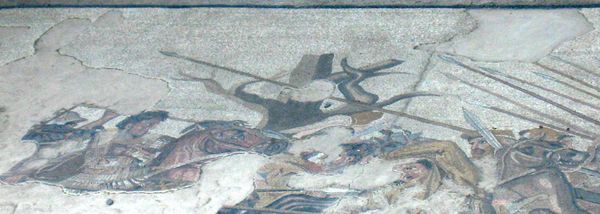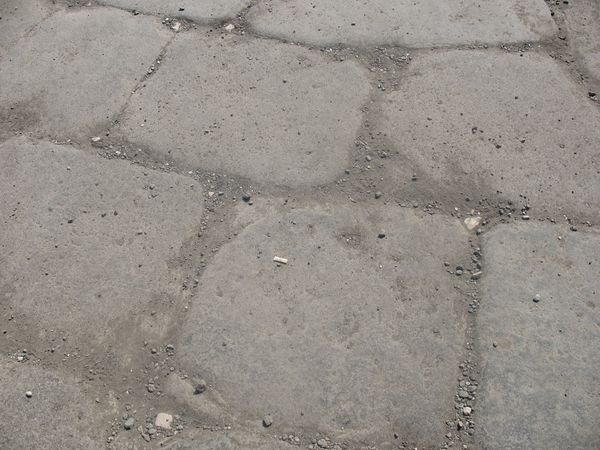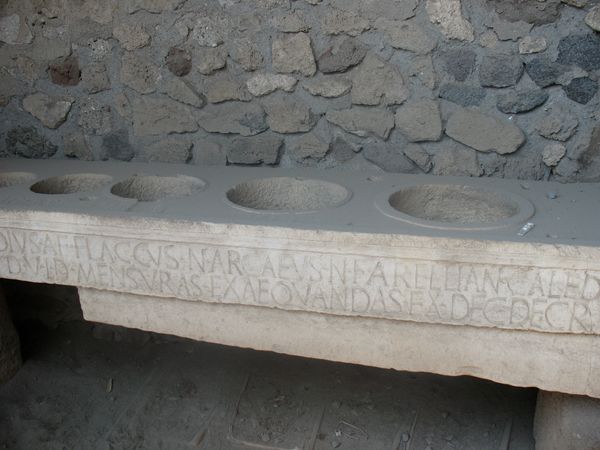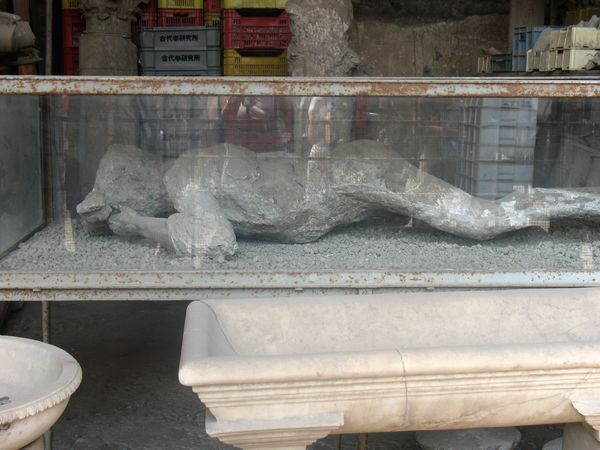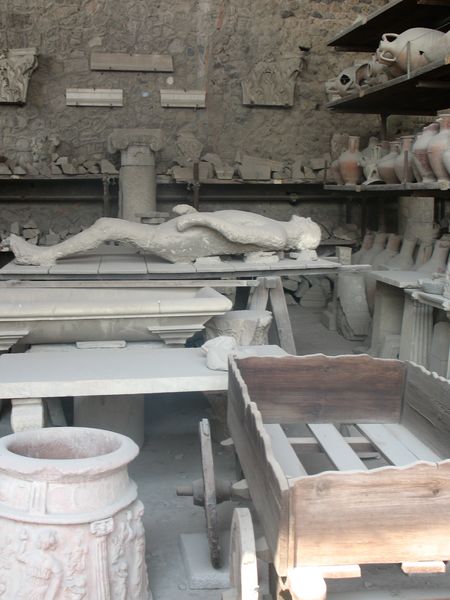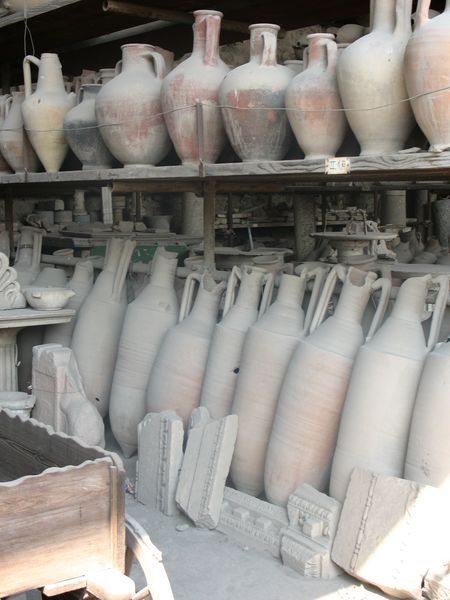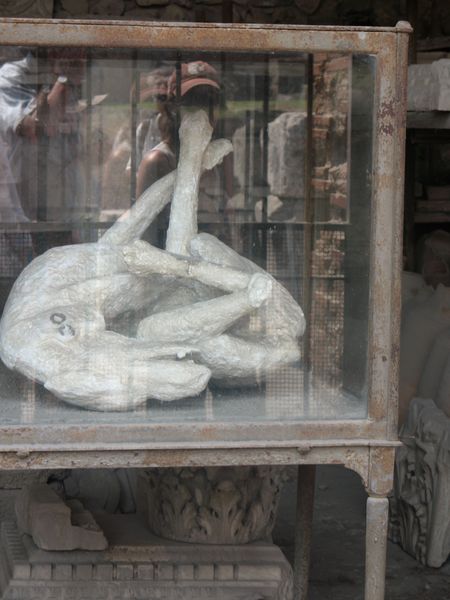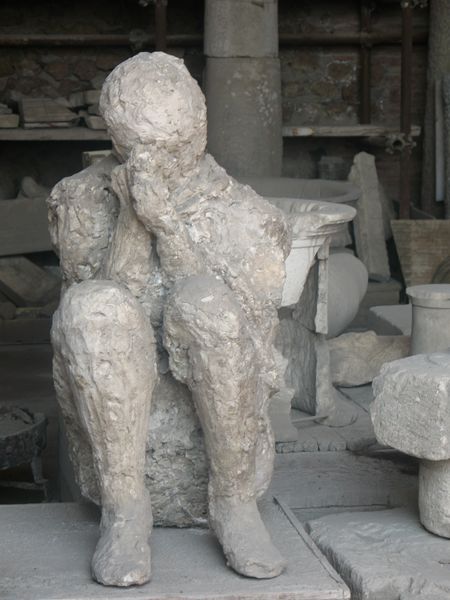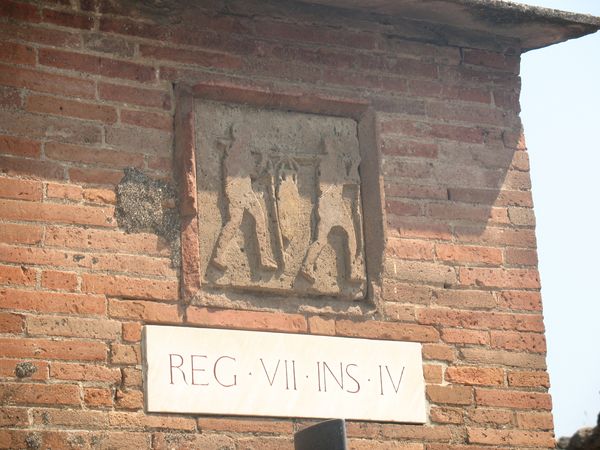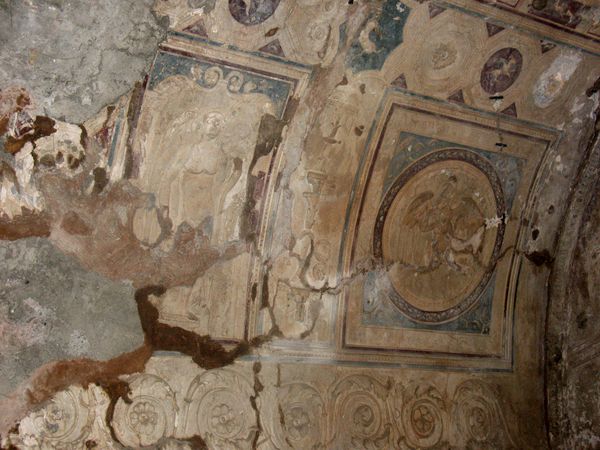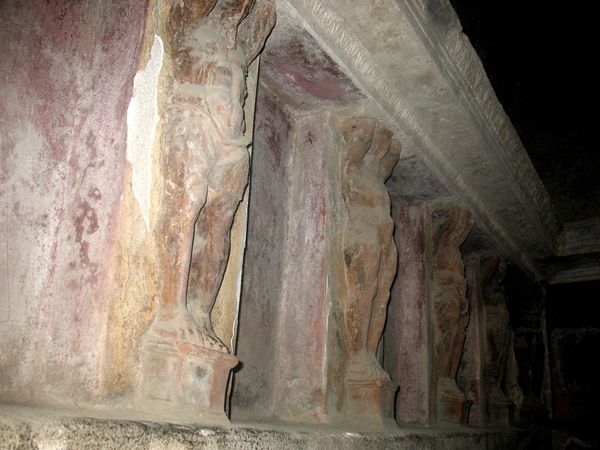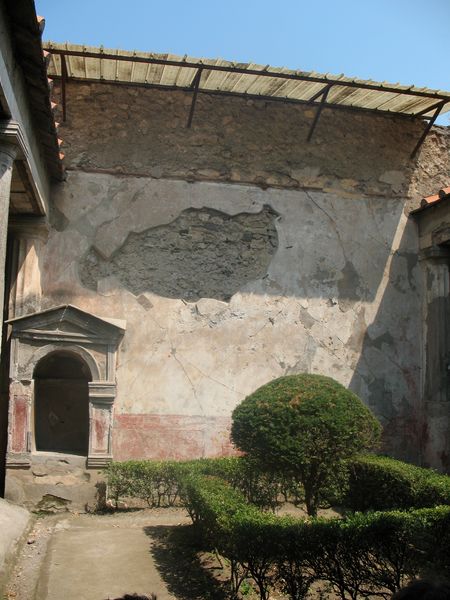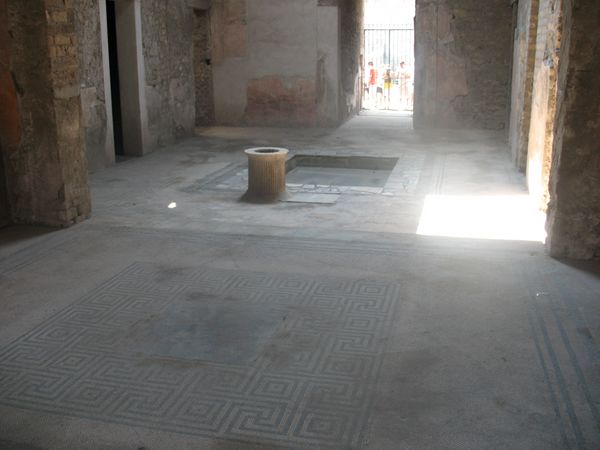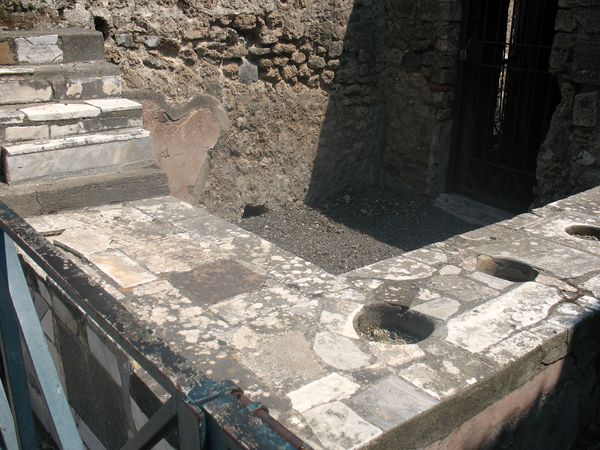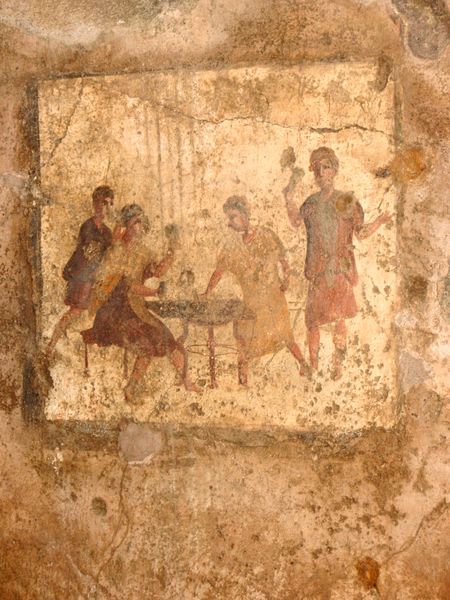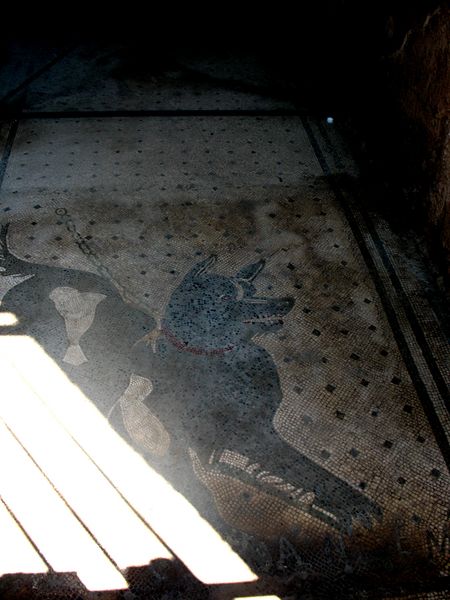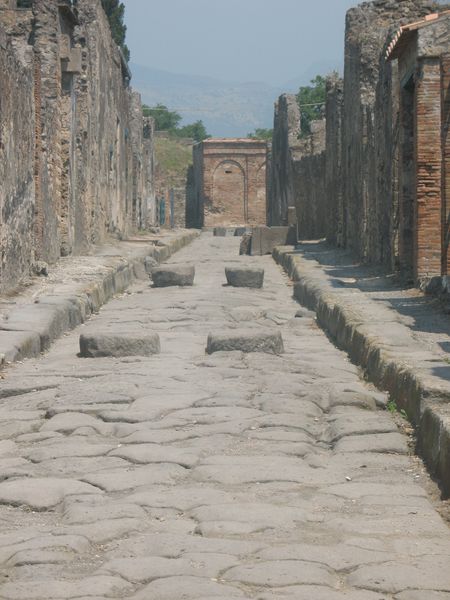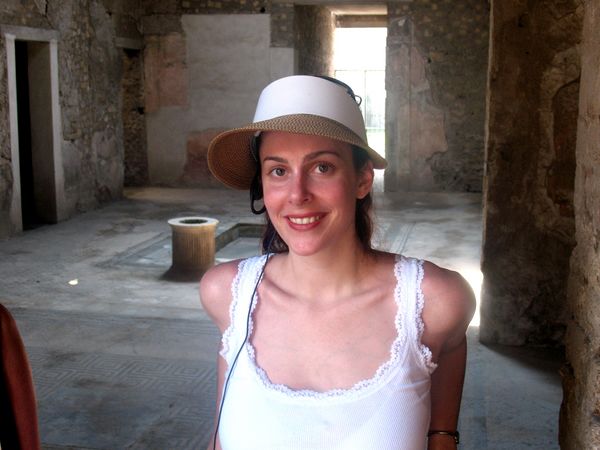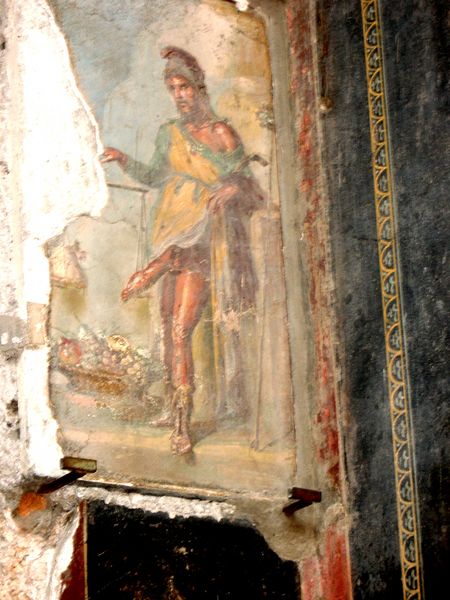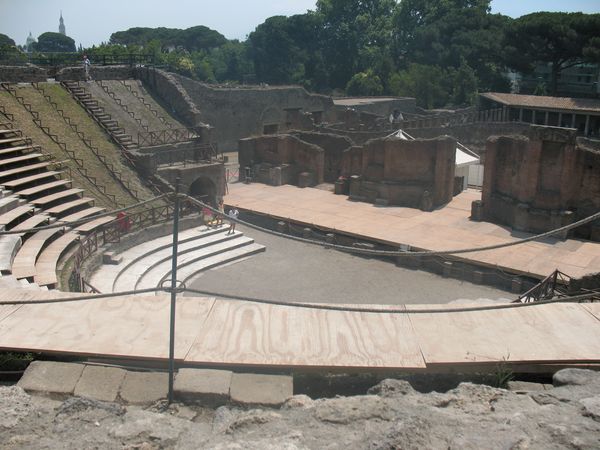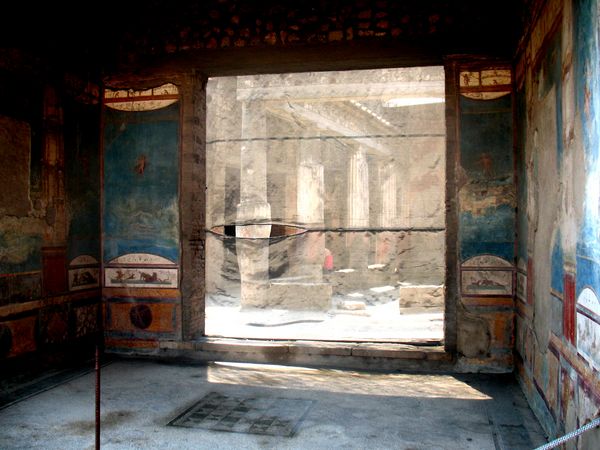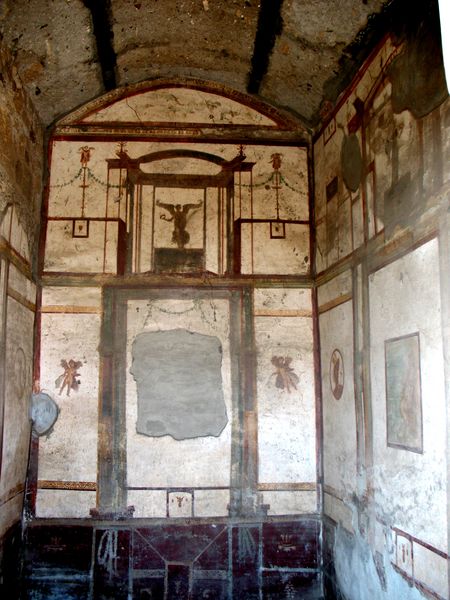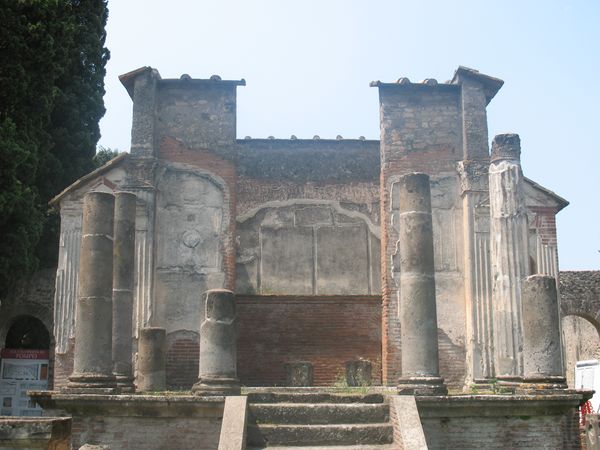
|
The ancient city of Pompeii was entirely covered by a flow of lava and ash during the erruption of Mount Vesuvius on August 24, 79 AD. For seventeen hundred years, it lay buried until its rediscovery in 1748.
The outer remains of the great city of Pompeii
The holes you see in the wall in the center of the photo were for tying up boats (the water once met the city of Pompeii). During the eruption, wealthy Pompeiians fled the city and left their servants behind to guard the silver and gold.
One of the only surviving mosaics depicting Alexander the Great was found in Pompeii. If you look closely, you can see him on far left riding his horse.
The mosaic doesn’t come out very clearly in photos, but it’s quite beautiful.
These stones, also known as cat’s eyes, reflected the moonlight and were added to the cobbled streets do the inhabitants could see the roads at night.
This was used to measure quantities of grain and other products in the market
When the buried city of Pompeii was discovered, so were the unfortunate inhabitants who couldn’t escape. Many were slaves who had been told to stay behind to guard the gold and silver inside their masters’ villas. After the ash fell, burying its victims, so did rain, turning the bodies into frozen statues. In 1863, archaeologists discovered a method of preserving these bodies, giving life to people who died nearly two thousand years ago. This woman, perhaps a slave or simply someone who couldn’t get out fast enough, was pregnant. Nearby, at one of the many inns in Pompeii, another woman was discovered with a bracelet that read, “From the Master to his slave.”
This dog couldn’t escape because he had been left behind and chained.
A young boy holds a handkerchief to his face. Elsewhere, beneath a staircase, a child was found clutching a statuette of Venus, the patron deity of Pompeii.
An image of two slaves carrying a burden between them indicated that this was the road where slaves could be hired for heavy labor.
Inside Pompeii’s Baths
Inside the remains of Pompeii’s Baths
|
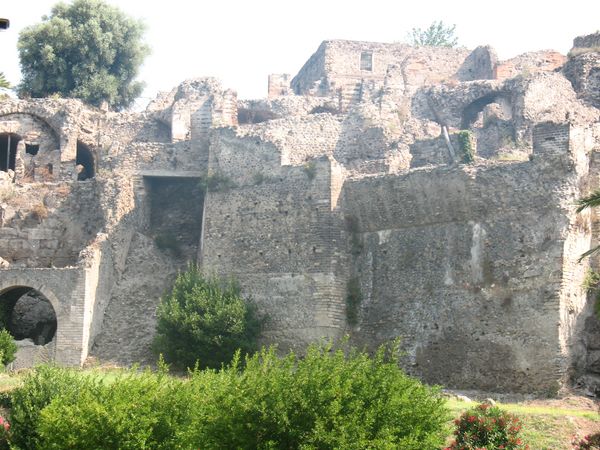
The outer remains of Pompeii
One of the ancient villas in Pompeii
The mosaiced atrium of a villa
The remains of a taberna. Those holes would have been used for holding and displaying heavy amphorae filled with wine.
A surviving fresco portrays men playing dice.
At the entrance of many homes were mosaics depicting dogs and warning Cave Canem or Beware of Dog.
These round stones were added so the inhabitants wouldn’t have to step in the muck and dirty water that flowed through the streets.
An image of of the well-endowed Priapus in the House of the Vetti. When King Francis I of Naples visited the Pompeii in 1819 with his family, he was so embarrassed by the erotic art that he had it locked away.
The remains of a theatre in Pompeii
An example of a floor mosaic
In the House of the Ancient Hut stunning examples of Roman frescoes still remain.
The remains of a Temple to Isis. The goddess had a strong following in the city of Pompeii. |
|
